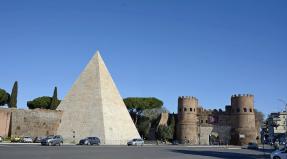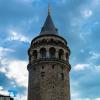Who was p to uslar. Pyotr Karlovich Uslar: biography. Education and military career
- Uslar P.K. The most ancient legends about the Caucasus // Collection of information about the Caucasian highlanders. Issue. X. Tiflis, 1886. - LXXXIII p. + 581 p.
"Ethnography of the Caucasus. Linguistics"
- Uslar P.K. Ethnography of the Caucasus. Linguistics. Abkhaz language, Tiflis, 1887. - XV p. + 193 p. + 120 s. (Republished: Sukhum, 2002.)
- Uslar P.K. Ethnography of the Caucasus. Linguistics. II. Chechen language, Tiflis, 1888. - 52 p. + 246 p. + 117 p.
- Uslar P.K. Ethnography of the Caucasus. Linguistics. III. Avar language, Tiflis, 1889. - 242 p. + 275 p. + 20 s.
- Uslar P.K. Ethnography of the Caucasus. Linguistics. IV. Lak language, Tiflis, 1890. - 42 p. + 422 p. + 14 s.
- Uslar P.K. Ethnography of the Caucasus. Linguistics. V. Khyurkily language, Tiflis, 1892. - 497 p.
- Uslar P.K. Ethnography of the Caucasus. Linguistics. VI. Kyurinsky language, Tiflis, 1896. - 639 p.
- Uslar P.K. Ethnography of the Caucasus. Linguistics. VII. Tabasaran language. Tbilisi, 1979. - 1072 p.
Military Statistical Review
- Military Statistical Review of the Russian Empire. T. 4. Part 1: Tver province / Comp. Gene. staff headquarters: Uslar and von Minster. St. Petersburg, 1848.
- Military Statistical Review of the Russian Empire. T. 2. Part 3: Vologda province / Comp. Gene. headquarters cap. Uslar. St. Petersburg, 1850.
- Military Statistical Review of the Russian Empire. T. 16. Part 6: Erivan province / Comp. Gene. headquarters cap. Uslar. St. Petersburg, 1853.
Articles and notes
- Uslar P.K. Plains of the Erivan province; A look at the Erivan province in hydrographic terms and a review of the Araks River // Notes of the Caucasian Department of the Russian Geographical Society. Book. I. Tiflis, 1852.
- <Без подписи.>On the study of Caucasian languages // Caucasus. 1862. No. 49, No. 50.
- <Без подписи.>Something about the alphabets of the Caucasian highlanders // Caucasus. 1863. No. 20.
- Uslar P.K. Something about the verbal works of the highlanders // Collection of information about the Caucasian highlanders. Issue. I. Tiflis, 1868.
- Uslar P.K.<Заметка об изучении убыхского языка>// Caucasus. 1868. No. 113.
- Uslar P.K. Beginning of Christianity in the Transcaucasus and the Caucasus // Collection of information about the Caucasian highlanders. Issue. II. Tiflis, 1869.
- Uslar P.K. On the spread of literacy among the highlanders // Collection of information about the Caucasian highlanders. Issue. III. Tiflis, 1870.
- Uslar P.K. Characteristic features of the Caucasian languages // Collection of information about the Caucasian highlanders. Issue. IX. Tiflis, 1876.
- Uslar P.K. Guria detachment in 1855 // Caucasian collection. T. 5. Tiflis, 1880. (Text)
- Uslar P.K. About the Colchians // Notes of the Caucasian Department of the Russian Geographical Society. Book. XIV, no. 2. Kazan, 1891.
Letters
- Letters of P.K. Uslar // Uslar P.K. Ethnography of the Caucasus. Linguistics. II. Chechen language, Tiflis, 1888.
- Letters of P. K. Uslar to A. A. Shifner // Uslar P. K. Ethnography of the Caucasus. Linguistics. IV. Lak language, Tiflis, 1890.
- Unpublished letters of P. K. Uslar (Publication of A. A. Magometov) // Matsne (Bulletin. Organ of the Department of Social Sciences of the Academy of Sciences of the Georgian SSR). 1968. No. 5. pp. 193-210.
About him
- Bekoeva T. A. The role of P. K. Uslar in the development of the school and education of the mountain peoples of the North Caucasus. Diss. … cand. teacher Sciences. Vladikavkaz, 1998.
- Bekoeva T. A. P. K. Uslar on the problems of education and upbringing of the mountain peoples of the North Caucasus: Textbook-method. allowance. Vladikavkaz, 1999. - 53 p.
- Bekoeva T. A. Educational and pedagogical ideas of P. K. Uslar. Vladikavkaz, 2000. - 159 p.
- Bekoeva T. A. A prominent educator of the North Caucasus in the second half of the 19th century P. K. Uslar. Vladikavkaz, 2008. - 155 p.
- Bunkova Yu. V. Problems of studying and enlightening the peoples of the North Caucasus in the views and activities of P. K. Uslar and N. I. Voronov. Diss. … cand. ist. Sciences. Nalchik, 2007.
- Gadzhiev A.-G. S. Petr Karlovich Uslar - an outstanding Caucasian scholar: On the occasion of the 150th anniversary of his birth. Makhachkala, 1966. - 25 p.
- Gyulmagomedov A. G., Gyulmagomedov G. A. Works of P. K. Uslar on Dagestan languages and modern linguistics // Bulletin of the Dagestan Scientific Center. 2008. No. 32. S. 70-73. (pdf)
- Zagursky L.P. Pyotr Karlovich Uslar and his activities in the Caucasus // Collection of information about the Caucasian highlanders. Issue. X. Tiflis, 1881.
- Magometov A. A. Unpublished monograph by P. K. Uslar about the Tabasaran language // Questions of linguistics. 1954. No. 3.
- Magometov A.A.P.K. Uslar as the largest Caucasian scholar and linguist (to the 150th anniversary of his birth) // Izvestiya AN SSSR. SLA. 1966. Issue. 5. S. 377-385.
- Magometov A. A. P. K. Uslar - researcher of the Dagestan languages. Makhachkala, 1979. - 100 p.
- Rashidova G. R. Dagestan in the art journalism of P. K. Uslar. Diss. … cand. philol. Sciences. Makhachkala, 2007.
- Chikobava A. S. P. Uslar and issues of scientific study of the mountain Iberian-Caucasian languages // Iberian-Caucasian linguistics. VII. Tbilisi, 1955.
- Gabunia Z. M. Russian linguistic science in the formation and development of Caucasian linguistics, Vladikavkaz, 2011. - 518 p. section Uslar P. K. s.10-101.
- Gabunia Z. M. Scientific portraits of Caucasian linguists (on the history of linguistics), Nalchik, 1991.
G. R. Rashidova
DAGESTAN IN THE PUBLICISTS OF P. K. USLAR
The work is presented by the Department of Russian Literature of the Dagestan State University.
Scientific adviser - Doctor of Philology, Professor Sh. A. Mazanaev
The article considers for the first time the scientific and educational journalism of a prominent Russian linguist of the 19th century Pyotr Karlovich Uslar. His articles, reports and letters are analyzed, and the place of Dagestan is determined.
The article is devoted to the scientific and educational works of Petr Karlovich Uslar, the great Russian linguist of the 19th century. The author analyzes his articles, reports and letters and defines the role of Dagestan there.
The life and scientific activity of a prominent Russian linguist Pyotr Karlovich Uslar (1816-1875) was studied by linguists, historians and writers: L. Zagursky, A. Chikobava, Dm. Trunov, A. Magometov, A. Gadzhiev, B. Gadzhiev and others. However, the scientist's journalism still remains unexplored.
P. K. Uslar was not only a linguist, a researcher of the Caucasian, including Dagestan languages, but also a historian, ethnographer, educator and talented publicist.
He served in the Caucasus since 1837, closely followed military and other events, read periodicals, corresponded with scientists, poets and public figures, and shared the views of democrats. He proposed to introduce the highlanders of the Caucasus to the Russian people and Russian culture through their education in their native languages. To this end, the scientist studied the history, ethnography and languages of the mountain peoples.
Articles, travel notes, reports and other publicistic works of P. K. Uslar were published during the author's lifetime in the newspaper "Kavkaz", "Collections of information about the Caucasian highlanders" (SSKG)1 and other publications in Russian and German. Only in the issue of the SSCG in 1887 were published 6 articles and the monograph "Abkhaz language". The most famous
Important and problematic of the articles are: “The development of literacy among the mountaineers”, “The spread of literacy among the mountaineers”, “Proposal for the organization of mountain schools”, “On the compilation of the alphabet of the Caucasian languages”, etc.
The journalism of P. K Uslar includes works of various genres: newspaper articles, magazine articles, prefaces to books, reports, reports and letters. The personal letters of the scientist are also closely connected with his educational and linguistic activities.
An analysis of these and other articles shows that Pyotr Karlovich advocated secular education, the compilation and publication of alphabets, primers, textbooks in their native languages, for the upbringing of the highlanders in the spirit of friendship with the Russian people and other peoples of the region, for the study and preservation of languages, folklore, culture and the history of aboriginal peoples, for translating Russian books into mountain languages, for solving other socio-political, socio-economic and moral-ethnic problems.
The scientist's journalism is predominantly scientific and educational in nature, but it also contains elements of such scientific fields as history, ethnography, folklore, ecology and everyday life, etc. Therefore, it can be noted that it is also characterized by syncretism.
In his journalistic works, P.K. Uslar poses such topical issues as the education of the peoples of the Caucasus, the creation of schools in their native language, etc. He persistently addresses officials, scientists, writers and the public with the same view, problems of education of the peoples of the Caucasus, including Dagestan.
In the journalism of P. K. Uslar, human pain is expressed for the oppressed, disenfranchised and forgotten by God people - mountaineers, deprived of literacy in their native language; their development prospects are revealed if they accept the system of education and upbringing proposed to them.
Argumentation, scientific character, persuasiveness and perseverance are inherent in the articles and reports of the scientist. Bearing in mind these and other features of journalism, it is not difficult to imagine how its author wanted to influence the tsarist officials, on whom a positive solution to the problem of enlightening the highlanders depended. The educational, pedagogical, linguistic and philosophical views of the scientist are clearly manifested in them.
Here it is necessary to note the functional role of journalism in a certain society. As V. Uchenova notes, “the meaning of journalism was and remains the impact, first of all, on social practice, on the action of people and public institutions. The path to this often lies through the formation of opinions. So, it can be assumed that P.K. Uslar, who tried to create public opinion, also understood the functional role of journalism.
The journalism of P. K. Uslar is primarily analytical, it contains a lot of valuable information about Dagestan: about its languages, people, about the state of their enlightenment. He developed and published lithographically valuable works to this day: “Avar language”, “Lak language”, “Khyurkilin-sky (Dargin) language”, “Kyurinsky (lez
Ginsky) language”, and “Tabasaran language” remained unfinished; wrote dozens of articles, reports and letters directly related to Dagestan.
Dagestan writer Dmitry Trunov called his essay about P.K. Uslar "Pioneer of Caucasian linguistics." The author relies on events and facts taken from the life of a scientist, recreates a portrait of a scientist in love with Dagestan and the Dagestanis: “The country of mountains ... it attracted him irresistibly, attracted him for many years, the joys of knowledge and the joys of the rapid flight of scientific thought are associated with it . It was in this country that he matured as a scientist…”3.
The scientist highly appreciated the folklore and musical culture of the peoples of Dagestan, noted that the highlanders have an extensive supply of melodies. Mountain melodies are a highly interesting phenomenon. I do not think that there is a European who could get used to them the first time, but the further you go, the more you get used to their wild charm.
The creation of the image of Dagestan in the journalism of P. K. Uslar takes place in stages: historical events and facts in the scientist’s articles are supported by ethnographic material; characterizing the languages of local peoples (Avars, Laks, Dargins, Lezgins and Tabasarans), a collective image of the speakers of a particular language is created; describing the life, folklore, customs and traditions of local peoples and their specific representatives, including their assistants and translators, living images of real people - historical figures are created.
The images of Dagestan and Dagestanis in P. K. Uslar's prophecies were created not only on the images of Shamil, Hadji Murad and other legendary personalities, but also on the examples of living people surrounding the scientist. Such people, worthy of respect for love and trust, were his assistants and translators.
Dagestanis. In her memoirs, the scientist’s daughter Nina Petrovna writes: “On June 5, Father began to speak incessantly, incessantly calling on mountaineers, especially some Kazanfer”4.
A lot of space in the work of Petr Karlovich is occupied by business, official and personal letters to members of the Russian Geographical Society, scientists, publishers, family members and friends.
Most of all, Pyotr Karlovich addressed letters to A. Berger, chairman of the Caucasian Archaeological Commission, A. Shifner, academician of the Russian Academy of Sciences, K. Kessler, rector of St. Petersburg University, V. Frankini, head of the Mountain Administration, D. Kovalevsky, ruler of affairs Caucasian Department of the Russian Geographical Society, V. Sherzl - Professor of Kharkov University, etc.
According to A. A. Magometov, one of the researchers of the scientist’s work, Petr Karlovich Uslar’s letters contain a variety of materials, but mostly they are of a business and scientific nature: the author reports on the progress of work on the languages he is studying, on the difficulties, on the sequence of work etc. The letters of P. K. Uslar are of great historical and linguistic interest, they express the author's views on the studied languages, general linguistic, ethnographic, cultural, educational and other problems of Dagestan5.
Letters of P. K. Uslar - chronology, the brightest moments of the life of a scientist-linguist.
In the articles and letters of P. K. Uslar there are brief descriptions of nature, epithets, metaphors and comparisons expressing deep feelings and emotions. So, in a letter of 1863 to A. Berger we read: “I am burning with the desire to go to Dagestan, and even more so only summer time is favorable for classes in the mountains ... I spent the summer in Guni-be, in the central point of Central Dagestan, where I had the opportunity to talk with representatives of all the numerous maarul (mountain) tribes ... The cold drove me out of the mountains, and I settled in Derbent for the whole winter. In the course of my travels, I found capable translators for each of the languages, whom I will call here one by one ... Thanks to the excellent assistants I found, the Avar grammar came out very complete ... ".
Articles and letters of P. K. Uslar are informative, problematic, delicate and highly literate. The author, despite his baronial title and general rank, addresses the addressee with great respect, for example: “Dear sir!” to the ruler of affairs of the Caucasian department of the Russian Geographical Society D. I. Kovalevsky, etc. And each letter ends with the expressions: “Accept the assurances of my perfect respect and devotion to you” and “Your obedient servant».
The articles and letters of P. K. Uslar are a great contribution to Russian journalism of the 19th century. They have not lost their significance even today.
NOTES
1 SSCG - Tiflis, 1987.
2 Uchenova V. Publicism and politics. M., 1979. S. 13.
3 Trunov D. Light from Russia. Makhachkala, 1956, pp. 151-152.
5 Magomedov A. Uslar P. K. - researcher of Dagestan languages. Makhachkala, 1979, p. 81.
Member of the Caucasian department of the Imperial Russian Geographical Society (1851), corresponding member in the category of linguistics of the Historical and Philological Department of the Academy of Sciences (1868).
Origin and family
Born in 1816 in the family of barons Uslar (Uzlar), whose estate was in the village of Kurovo, Vyshnevolotsky district, Tver province (now Staroe Kurovo, Vyshnevolotsky district); in addition to Kurov, the Uslars also owned the villages of Gorbovo and Naumovo.
Grandfather - Major Karl Uslar, a native of Hanover, came to Russia and entered the military service in 1765; the Kurovo estate was granted to him by Alexander I. Father - Captain Karl Karlovich Uslar, a participant in the Patriotic War of 1812 (died in 1840). Mother - the daughter of a collegiate assessor Vera Vasilievna Chikhacheva.
There were seven children in the family: in addition to Peter, this is the elder sister Alexander (1815) and the younger ones Sergey (1819), Elizabeth (1820), Elena (1822), Maria (?) and Nikolai (1830) .. Sergey Karlovich was killed at 22 years old while serving in the Caucasus, Nikolai Karlovich trained as a lawyer, but died at the age of 30, having lost his sight. Elena Karlovna, in the marriage of Frolov, then Bogdanov, was a friend of E. A. Denisyeva, the common-law wife of F. I. Tyutchev.
P. K. Uslar was married to Sofya Karlovna Crabbe, daughter of General K. K. Crabbe. They married in 1839 in Shusha; in 1843 Sofya Karlovna died almost at the same time as their eldest daughter Yulia.
Their youngest daughter, Nina Petrovna, was married to D. D. Blagovo, a titular adviser and a well-known writer and theologian; their children are Varvara (1859) and Peter (1861), who died in infancy. In 1862, Nina Petrovna left her family, D. D. Blagovo became a monk with the name Pimen. Subsequently, Archimandrite Pimen was rector of the Russian embassy church in Rome, where he died. From the second marriage, Nina Petrovna had two more children. Varvara Blagovo became the wife of the historian, professor of Kazan University D. A. Korsakov.
Education and military career
P. K. Uslar was first brought up at home under the guidance of a teacher G. Middendorf, then he graduated from the 3rd St. Petersburg Gymnasium (1833) and the Main Engineering School (1836) (now the Military Engineering and Technical University). By profession - a military engineer.
In 1837 he was sent to the Separate Caucasian Corps, where during the Caucasian War he began serving in the engineer battalion. In 1839, he participated in Golovin's expedition to South Dagestan, including taking part in the capture of Akhta. Then, after his marriage, he leaves the Caucasus for almost 10 years.
In 1840, Uslar entered the Imperial Military Academy in St. Petersburg, after which he was assigned to the Siberian Corps. In 1843-44. is in the service in the Siberian Corps, takes part in the expedition against Kenesary Kasymov. He describes his impressions in the essay "Four Months in the Kirghiz Steppe".
Then Uslar was sent on a mission to compile a military-statistical description of the Tver and Vologda provinces, which continued in 1845-49. Participated in the Hungarian campaign of 1849.
Since 1850, Uslar again served in the Caucasus, where he stayed for 25 years until his death, only briefly leaving for his native estate (usually for the summer). At first he was sent for the military-statistical description of the Erivan province. In the Crimean War of 1853-56. chief of staff of the Guria detachment of the Separate Caucasian Corps. Then he served in Kutaisi with the rank of colonel. Since 1862 - major general.
Awarded with the Order of St. Anne, 3rd class. with a bow (1849) and 1st art. with swords (1867), St. Vladimir 4th class. with a bow (1854) and 3rd art. with swords (1857), St. George 4th class. for 25 years of service (1855), St. Stanislav 1st class. (1865).
Back in 1865, Uslar complained to A.P. Berger about “an extreme disorder of health, and especially of vision,” and in 1871 he wrote: “My health is completely destroyed - not by classes, but by the climate of the Caspian coast, which is very harmful to me.” In the spring of 1874, Uslar, already seriously ill, finally returned from Dagestan to his estate, where he died in the summer of 1875. According to his daughter's memoirs, for several days before his death he was delirious and "spoke loudly, incessantly calling on the mountaineers with whom he worked in Shura, especially Kazanfer."
He was buried in the village of Osechno, where the parish Trinity Church and cemetery were located.
Studying the languages and peoples of the Caucasus
The first Caucasian work of P. K. Uslar was the “Military Statistical Review of the Erivan Province” (compiled in 1850). In 1851, he became one of the first 16 full members of the Caucasian Department of the Imperial Russian Geographical Society, created at the request of the governor of the Caucasus, M. S. Vorontsov. In 1856, he was appointed chief of staff under the Kutaisi governor-general AI Gagarin, who was soon killed by the local prince Dadishkiliani.
In 1858, Uslar was entrusted with compiling the history of the Caucasus. He begins an outline of the ancient history of the Caucasus, which he finalizes in subsequent years (published after his death). Seeing in the language the most reliable source of the history of the people, Uslar turns to the study of languages. He began his study of mountain languages from the West Caucasian family - from Circassian, Ubykh and Abkhaz. Little material was collected on the first two, and brief notes on Circassian and Ubykh were published only after Uslar's death (together with his sketch of Svan grammar, also small in volume). The Abkhazian language was studied in more detail, work on the grammar of which was begun in 1861 in Sukhumi and continued in 1862 in Tiflis; in a relatively short time, the researcher managed to understand the structure of one of the most complex Caucasian languages and develop its alphabet (based on the Bzyb dialect).
Already in 1861, Uslar was developing the “Caucasian alphabet” for writing unwritten mountain languages - he takes the principle of the Georgian alphabet as a basis, but with Russian letters and additions, partially using letters from the Ossetian alphabet of Sjogren.
In 1862 Uslar also visited Nalchik together with the Kabardian writer Umar Berseev. They create the Kabardian alphabet on the Russian basis (this work was completed by the local educator Kazi Atazhukin, who compiled and published the Kabardian primer in 1865).
In the same year, Uslar began to study the Chechen language: he appealed to the main headquarters of the Caucasian army with a request to call two Chechens to Tiflis, who were as familiar as possible with Russian letters, and in March police ensign Kedi Dosov and mullah Yangulbay Khasanov arrived there. Then the classes are transferred to the Groznaya fortress, where a temporary school was opened in June, where Mullah Yangulbai taught Chechen literacy classes for 25 students who did not speak Russian for six weeks. After this time, all students learned to write and read Chechen, and Uslar was able to complete Chechen grammar; Subsequently, Kedi Dosov compiled a Chechen primer based on the recording method proposed by Uslar.
The monographs "The Abkhazian Language" and "The Chechen Language" lithographed by the author were sent to Academician A.A. Shifner, who submitted them to the competition at the Academy of Sciences, and in 1863 Uslar was awarded the Demidov Prize for these works (half size). In the first two grammars, a general description plan was already formed, which was used by the author in subsequent works: at first, after general information about the language, the alphabet was considered (based on the Russian alphabet with the addition of special characters), then there was a description of parts of speech, separate sections made up sample texts (proverbs, songs, fairy tales) and ended the monograph with a collection of words (indicating the main grammatical forms and examples of combinations and sentences).
Since 1863, Uslar settled in Temir-Khan-Shura and began to study the Dagestan languages, starting with Avar, the most common language in Dagestan. The basis was the Khunzakh dialect as more accessible for research; Uslar spends the whole summer in the village of Gunib. The scientist's consultant was Aydemir Chirkeyevsky, who was described by Uslar as "not only a diligent, but also a highly gifted employee", from whose activities "in the field of Dagestan language study, science has the right to expect precious gifts in the future." Indeed, in 1867, in Temir-Khan-Shura, the collection “Avar Tales and Songs Collected by Aydemir Chirkeyevsky” was published; however, in 1871, Aydemir fled to Turkey and, apparently, never returned to Dagestan.
In the autumn of the same 1863, having not yet lithographed the Avar grammar, Uslar began to study the Lak (“Kazikumukh”) language. In a letter to Academician A. Shifner, he says: “Now I’m starting on the Kazykumukh language, then I’ll use the Archi language for four weeks. Next, I will deal with the Dargya languages, of which the purest is Urakli. In the same letter, Uslar encloses notes on the grammatical structure of the Archa language, made by him “in the course of one morning spent with the Archins”. In 1864, the Lak grammar was ready, and in 1865 it was lithographed. Following the Lak language, P. Uslar studies one of the dialects of the Dargin group - “Khyurkily” (Urakli), the grammar of which was lithographed by him in 1867. The name of the language was chosen according to the local name of one of the most populous villages (Khyurkila; now the village of Urakhi, Sergokalinsky district).
On December 13, 1868, Uslar became a corresponding member in the category of linguistics of the Historical and Philological Department of the Academy of Sciences. In 1871, he completed the study of the Lezgi ("Kyurin") language; the role of a consultant was “a natural Kurin named Ganazfer, from the village of Mamrachar, a gifted and hardworking person”; in February 1872, the lithographed Lezgi grammar was sent to Academician Shifner.
The last language that Uslar explores was the Tabasaran language, which he began to study in 1870, noting that "of all the Dagestan languages, Tabasaran presented the most difficulties." These difficulties lay primarily in the fact that the researcher could not find a suitable informant for a long time: “It has been almost a year since I started researching the Tabasaran language,” Uslar writes to Shifner in September 1871, “but I am forced to constantly change leaders ... they do not I manage to develop at least some grammatical understanding. The collection of material in Tabasaran was carried out in Yersi (a village with an Azerbaijani population, but with the residence of the county chief), where informants from Tabasaran auls were called. Uslar partly processed the Tabasaran material in Temir-Khan-Shura, the administrative center of the Dagestan region, but mostly in the family estate, where he usually went for the summer with the accumulated material.
The fate of the scientific heritage
P. K. Uslar made a huge contribution to the documentation of non-written Caucasian languages and was the spontaneous founder of the methodology of field research.
Uslar conceived descriptions of the Caucasian languages in the form of a series of monographs "Caucase polyglotte", covering all the main languages of the "Caucasian family". Academician A. A. Shifner, one of the first researchers of Caucasian languages, greatly contributed to the acquaintance of the scientific world and specialists with the works of Uslar. Having lithographed his next grammar, Uslar sent it to Shifner, who made reports about Uslar's work at the St. Petersburg Academy of Sciences. Uslar's grammars were rewritten by Schifner in German and published in the Bulletins (M?moires) of the Academy of Sciences.
At the end of the 1880s. Uslar's monographs on the Caucasian languages, with the exception of the grammar of the Tabasaran language, were published in a typographical way by the Administration of the Caucasian Educational District. Some monographs are accompanied by individual articles and letters, which present material on the progress of work on the languages being studied and the difficulties that Uslar encountered in the study of languages.
The monograph on the Tabasaran language remained unfinished, although the title page and alphabet had already been lithographed. The daughter of the deceased sent the manuscript of the Tabasaran grammar, as well as all linguistic and non-linguistic notes and even draft papers of her father to Academician Shifner. However, before his death in 1879, he did not have time to study Uslar's last monograph, and it remained unpublished for more than 100 years. Only in 1953-54. Tabasaran grammar was prepared for printing in Tbilisi by Dagestan scholar A. A. Magometov (the entire text of Uslar’s grammar was rewritten by him by hand) and published in 1979 with his comments and additions. In the same year, A. A. Magometov also published a monograph on the life and work of Uslar.
Uslar did a lot for the practical spread of literacy among the highlanders, native speakers of unwritten languages. With the compilation of the alphabet in the native language, work began on any grammar. Taking into account that “most of the mountain peoples are in almost continuous relations with the Russians” and, at the same time, in order to facilitate the assimilation of Russian literacy for the mountaineers, Uslar comes to the conclusion that it is necessary to base the mountain alphabets on the inscriptions of Russian letters with the corresponding additions. (The Russian letters ъ, ь, и, й, e, ю, я, s were excluded from the alphabet, but the Latin j, h and q were added.) At the same time, Uslar believed that the combination of two letters to express one sound is a clear imperfection alphabet, therefore, to designate special sounds, he used Georgian or letters invented by himself.
Uslar was the initiator of the creation of secular schools in the mountain villages, where education would be conducted in the native language. On the basis of the Uslar alphabet, several primers of the Nakh-Dagestan languages (Chechen, Lak, Avar) were published, although, in general, the program for teaching local residents to read and write in their native language at that time, unfortunately, was not implemented.
"Father of the Dagestan languages" P. K. Uslar
About 30 years ago, naming famous people who lived or visited Temir-Khan-Shura, Bulach Imadutdinovich often said with great respect: "Uslar."
Then I didn’t know yet: Is Uslar a surname or a given name? Once I decided to ask Bulach Imadutdinovich: “Uslar from which village? Is he an Avar or a Kumyk?”
Bulach smiled good-naturedly and said that Pyotr Uslar - "the father of the Dagestan languages" - was from the Tver province.
I threw up my hands: "the father of the Dagestan languages" from the Tver province! Then Bulach Imadutdinovich told me the following.
Petr Uslar's parents Karl Karlovich was German, and his mother was Russian. Pyotr Karlovich Uslar was born in the Tver province in the village of Kurovo. He graduated from the gymnasium, and then the engineering school. He took part in a military expedition to the Caucasus. He was supposed to compile the history of the Caucasus and Dagestan.
Even then, P.K. Uslar decided that you would better understand the highlander when you understand his language. At first he worked in Georgia and Chechnya, studied the folklore of these peoples, in 1863 he began working in Dagestan. He lived in Temir-Khan-Shura almost until the end of his life.
In the work of studying any language, he had his own system, which was different from all others. Before starting to study any language, Uslar worked with a highlander who knew this language perfectly. I will not dwell on Uslar's methods of learning this or that language. Let me just say that in one year a major work on the Avar language was prepared. In this work, the alphabet, phonetics and grammar, translation of words into Russian, stress are given. He was greatly assisted in compiling the work in the Avar language by his assistant Aydemir Chirkeyevsky.
In 1864 Uslar was already working on a book of the Lak language. His assistant in the Lak language was Abdulla Omarov.
Then Uslar examines in detail the Dargin language, Tabasaran. He publishes a large work in the Kurin language. Uslar made special typefaces, then cast in Tiflis, and delivered them himself to Temir-Khan-Shura. This accelerated the publication of books in Dagestan languages.
Since that time, official correspondence in Arabic has disappeared, giving way to correspondence in local languages.
As early as 1866–1867, thanks to Uslar, the first secular school was opened in Khunzakh. In 1867, a secular school was opened in Kumukh as well. In it, the lessons were taught by another assistant of Peter Karlovich - Abdulla Omarov.
A few years later, the teaching of the Russian language was introduced in Khunzakh and Kumukh.
P.K. Uslar thoroughly studied the five main languages spoken by most of the population of Dagestan.
Pyotr Karlovich found time to do a lot of work on the study of the history of Dagestan.
He not only compiled primers, advised and helped to collect fairy tales, proverbs, songs, legends of local peoples.
Eleven long years have passed since the arrival of Uslar in Temir-Khan-Shura. Constant trips and hiking in the mountains at any time of the year, in any weather, the lack of regular hot food, and most importantly, continuous titanic work undermined the health of a great scientist.
In the spring of 1874, Pyotr Karlovich left Temir-Khan-Shura forever and went to his native Kurovo.
He could barely move his legs, the liver disease worsened, it was no longer possible to save Pyotr Karlovich.
In Dagestan, a whole galaxy of remarkable linguists has grown up who continued the work of Aydemir Chirkeyevsky, Abdulla Omarov, Kazanfar Zulfugarov - Doctors of Science Sh. I. Mikailov, U. A. Meylanova, R. M. Magomedov, M. M. Gadzhiev and others.
And what such great people lived and worked in Dagestan, we are told by the same Bulach Imadutdinovich Gadzhiev.
From the book Medieval France author Polo de Beaulieu Marie-Anne From the book Everyday Life in Europe in 1000 the author Ponyon EdmondFormation of "Vulgar Languages" After the Latin language supplanted various Italian dialects in ancient times, it also began to take root in the conquered Gaul and Spain. Of course, it was not the language of Cicero, Titus Livius and Seneca. In the language we find
From the book of Molotov. semi-dominant ruler author Chuev Felix IvanovichKnowledge of languages Molotov says that he does not know foreign languages. However, he reads Maupassant in French, Kautsky in German ... I remember from childhood that in the newspapers they wrote how he corrected a translator at the UN who translated inaccurately from English. He said that he studied languages in
From the book of Imam Shamil author Kaziev Shapi Magomedovich From the book Secrets of Belarusian History. author Deruzhinsky Vadim VladimirovichAbout changing languages. It seems to me that today the bearers of the ancient heritage of their ancestors themselves are confused - we are talking about Yatvingians or Prussians. Plus, there is also the Labor language, which may well turn out to be the Prussian language. Although it was recently suggested in a TV show about laboratories that,
From the book New Theory of the Origin of Man and His Degeneration author Moshkov Valentin Alexandrovich30. ORIGIN OF LANGUAGES Corruption of sounds from defects in the organs of speech. The diversity of languages came from the variety of ways of settling and from its difference in time. Asian Aryans relatively recently moved out of Europe. The origin of the many languages \u200b\u200bthat we
From the book From Mystery to Knowledge author Kondratov Alexander MikhailovichWhere was the cradle of languages? The Malayo-Indonesian, or Austronesian, family of languages is not related to any other families in the world. True, facts have recently been obtained that indicate that in ancient times, about 9 thousand years ago, this family formed together with
From the book History of Russian Literature of the 19th Century. Part 2. 1840-1860 author Prokofieva Natalia Nikolaevna From the book Slavic Encyclopedia author Artemov Vladislav Vladimirovich From the book of Imam Shamil [with illustrations] author Kaziev Shapi Magomedovich From the book of Imam Shamil author Kaziev Shapi MagomedovichThe end of the Dagestan khans Arrived to say goodbye to my sister and Magomed-Shapi. Now he was already a lieutenant. He knew little about the Turkish drama of the highlanders, but he had information about the situation in Dagestan. After Shamil left for Russia, the former khans laid claim to control the highlanders.
From the book Chronicle of Muhammad Tahir al-Karahi about the Dagestan wars in the period of Shamil [The brilliance of Dagestan drafts in some Shamil battles] author al-Qarahi Muhammad TahirThe brilliance of Dagestan checkers in some Shamilevsky battles In the name of Allah, the merciful and merciful. There is no strength, there is no power, except through the intermediary of Allah, high and great. Praise be to Allah, who preferred those who fight for the faith to non-participants and [marked them] great
From the book of Vagria. Varangians of Rusi Yar: an essay on depoliticized historiography author Chudinov Valery AlekseevichPROXIMITY OF LANGUAGES “Teeth”, or the Beginning of a Chain of Strange Coincidences Uldanai Bakhtikireeva, a Kazakh teacher of English at the Peoples’ Friendship University of Russia, who was very surprised, first drew my attention to the presence of “oddities”
From the book Dagestan shrines. book two author Shikhsaidov Amri Rzayevich From the book Complete Works. Volume 8. September 1903 - September 1904 author Lenin Vladimir Ilyiche) The Incident with Equal Rights of Languages Let us return to the order of the sessions of the Congress. We have now become convinced that, even before the discussion of questions on the merits, the Congress clearly revealed not only a completely definite group of anti-Iskraists (8 votes), but also a group of intermediate,
From the book Tsar's Rome between the Oka and Volga rivers. author Nosovsky Gleb Vladimirovich13. Young Titus Manlius was sent by his father to the village Young David was sent by his father to a remote pasture Sextus Aurelius Victor says that his father sent Titus Manlius TO THE VILLAGE, p. 194. Apparently, this happened at a time when Titus Manlius was still a boy or youth, since
Baron Pyotr Karlovich Uslar(August 20 (September 1), Kurovo village, Vyshnevolotsky district of Tver province - June 8 (20), Kurovo village, Vyshnevolotsky district of Tver province) - Russian military engineer (major general), linguist and ethnographer. One of the largest Caucasian scholars of the 19th century, the author of grammatical descriptions of the Abkhaz, Chechen, Avar, Lak, Dargin, Lezgin and Tabasaran languages.
Origin and family
P. K. Uslar was married to Sofya Karlovna Crabbe, daughter of General K. K. Crabbe. They married in 1839 in Shusha; in 1843 Sofya Karlovna died almost at the same time as their eldest daughter Yulia.
Their youngest daughter, Nina Petrovna, was married to D. D. Blagovo, a titular adviser and a well-known writer and theologian; their children are Varvara (1859) and Peter (1861), who died in infancy. In 1862, Nina Petrovna left her family, D. D. Blagovo became a monk with the name Pimen. Subsequently, Archimandrite Pimen was rector of the Russian embassy church in Rome, where he died. From the second marriage, Nina Petrovna had two more children. Varvara Blagovo became the wife of a historian, professor at Kazan University D. A. Korsakov.
Education and military career
P.K. Uslar was first brought up at home under the guidance of teacher G. Middendorf, then he graduated from the 3rd St. Petersburg Gymnasium () and the Main Engineering School () (now the Military Engineering and Technical University). By profession - a military engineer.
Then Uslar was sent on a mission to compile a military-statistical description of the Tver and Vologda provinces, which continued in 1845-49. Participated in the Hungarian campaign of 1849.
Awarded with the Order of St. Anne, 3rd class. with a bow (1849) and 1st art. with swords (1867), St. Vladimir 4th class. with a bow (1854) and 3rd art. with swords (1857), St. George 4th class. for 25 years of service (1855), St. Stanislav 1st class. (1865).
member of the Russian Geographical Society, corresponding member of the St. Petersburg Academy of Sciences
Demidov Prize ()
The first Caucasian work of P. K. Uslar was the “Military Statistical Review of the Erivan Province” (compiled in 1850). In 1851, he became one of the first 16 full members of the Caucasian Department of the Imperial Russian Geographical Society, created at the request of the governor of the Caucasus M. S. Vorontsov. In 1856, he was appointed chief of staff under the Kutaisi governor-general A. I. Gagarin, who was soon killed by the local prince Dadishkiliani.
Uslar conceived descriptions of the Caucasian languages in the form of a series of monographs "Caucase polyglotte", covering all the main languages of the "Caucasian family". Academician A. A. Shifner, one of the first researchers of Caucasian languages, greatly contributed to the acquaintance of the scientific world and specialists with the works of Uslar. Having lithographed his next grammar, Uslar sent it to Shifner, who made reports about Uslar's work at the St. Petersburg Academy of Sciences. Uslar's grammars were rewritten by Schifner in German and published in Bulletins (Mémoires) of the Academy of Sciences.
At the end of the 1880s. Uslar's monographs on the Caucasian languages, with the exception of the grammar of the Tabasaran language, were published in a typographical way by the Administration of the Caucasian Educational District. Some monographs are accompanied by individual articles and letters, which present material on the progress of work on the languages being studied and the difficulties that Uslar encountered in the study of languages.
The monograph on the Tabasaran language remained unfinished, although the title page and alphabet had already been lithographed. The daughter of the deceased sent the manuscript of the Tabasaran grammar, as well as all linguistic and non-linguistic notes and even draft papers of her father to Academician Shifner. However, before his death in 1879, he did not have time to study Uslar's last monograph, and it remained unpublished for more than 100 years. Only in 1953-54. Tabasaran grammar was prepared for printing in Tbilisi by Dagestan scholar A. A. Magometov (the entire text of Uslar’s grammar was rewritten by him by hand) and published in 1979 with his comments and additions. In the same year, A. A. Magometov also published a monograph on the life and work of Uslar.

Lak alphabet by P. K. Uslar
Uslar did a lot for the practical spread of literacy among the highlanders, native speakers of unwritten languages. With the compilation of the alphabet in the native language, work began on any grammar. Taking into account that “most of the mountain peoples are in almost continuous relations with the Russians” and, at the same time, in order to facilitate the assimilation of Russian literacy for the mountaineers, Uslar comes to the conclusion that it is necessary to base the mountain alphabets on the inscriptions of Russian letters with appropriate additions. (Russian letters b, b, and, th, uh, Yu, I am, s were excluded from the alphabet, but Latin j, h and q.) At the same time, Uslar believed that the combination of two letters to express one sound is a clear imperfection of the alphabet, therefore, to designate special sounds, he used Georgian or invented letters by himself.
Uslar was the initiator of the creation of secular schools in the mountain villages, where education would be conducted in the native language. On the basis of the Uslar alphabet, several primers of the Nakh-Dagestan languages (Chechen, Lak, Avar) were published, although, in general, the program for teaching local residents to read and write in their native language at that time, unfortunately, was not implemented.
Reviews
| The late Uslar was a happy combination of the best qualities of the German and Slavic geniuses: possessing the indefatigability and constancy in work and inquisitiveness of mind, which are the bright sides of the German nation, the late Uslar was able to revive the most apparently uninteresting subject. When reading his historical studies, one is struck at first by the deep analysis of the subject and the vast erudition; the reader is lost in the midst of opinions that contradict one another, and suddenly a bright idea expressed by the author, and sometimes a witty consideration, illuminates the subject and resolves the controversial issue. The presentation differs in the highest degree in clarity, accuracy and relief; further, if the expression “le style c’est l’homme” is true, then it should be said about the style of Usara that it belongs to a Russian person. |
| P. Uslar aspired to much more than what he did. But what he did is enough to highly appreciate this researcher of the unknown world of Caucasian languages ...
The grandiose undertaking of P. Uslar after the death of the researcher did not receive further development for a long time. After P. Uslar until the Soviet period in Dagestan linguistics, we have only the works of A. Dirr, which repeat P. Uslar in method, but are significantly inferior to the works of the latter. Only in Soviet times did the study of the mountainous Iberian-Caucasian languages rise to the proper height. ... we must admit that from the pre-Soviet science of the study of Dagestan languages, we have the largest and most valuable research by P. Uslar, who, according to Academician A. Shifner, is "a true decoration of Russian linguistic science." |
| Uslar's descriptions are distinguished by documentary accuracy and linguistic intuition. In the era of almost undivided domination of the Eurocentric view of the structure of the language and the absence of general linguistic terminology, its descriptions give a completely objective idea of the structure of the languages described. So, when describing the phonetic systems of the Caucasian languages, he - in the absence of the concept of a phoneme in his contemporary linguistic theory - came, in fact, to their phonemic representation. |
sayings
(Quoted from the book: Magometov A. A. P. K. Uslar - researcher of Dagestan languages. Makhachkala, 1979.)
- On language as a source of the history of the people:
| An inexhaustible means for the study of ancient times is language: language cannot be invented or faked. There are no written legends that the main European peoples and Hindus were of the same origin, and yet comparative linguistics proves this in an irrefutable way ... So, first of all, attention should be paid to language. |
- On the richness of the Caucasian languages:
| The opinion about the extreme poverty of these languages is completely erroneous and is preached by people who have no idea about them. These languages, on the contrary, are incredibly rich in grammatical forms, which make it possible to express the most subtle shades of thought. |
- On the genetic commonality of the Caucasian languages:
| Now we can say affirmatively that to the great families of languages of the old world: Indo-European, Semitic, Cushitic (Coptic, Ethiopian) and Ural-Altaic, should be added a completely independent family of Caucasian languages, since all these languages, with amazing diversity, represent deep related traits. The Armenian language is Indo-European; Georgian, apparently, is a Caucasian language and, in all probability, the most remarkable in the whole family. |
- On the importance of publishing texts in native languages:
| The collection of materials should consist in recording folk songs, fairy tales, proverbs, everyday conversations with literal and interlinear translation. It's certainly not as easy as compiling collections.<слов>, but even more so the price of such a merit in the eyes of science. |
- On the importance of working with native speakers:
| It is easier to hear how the grass grows, in the words of the Scandinavian |




















